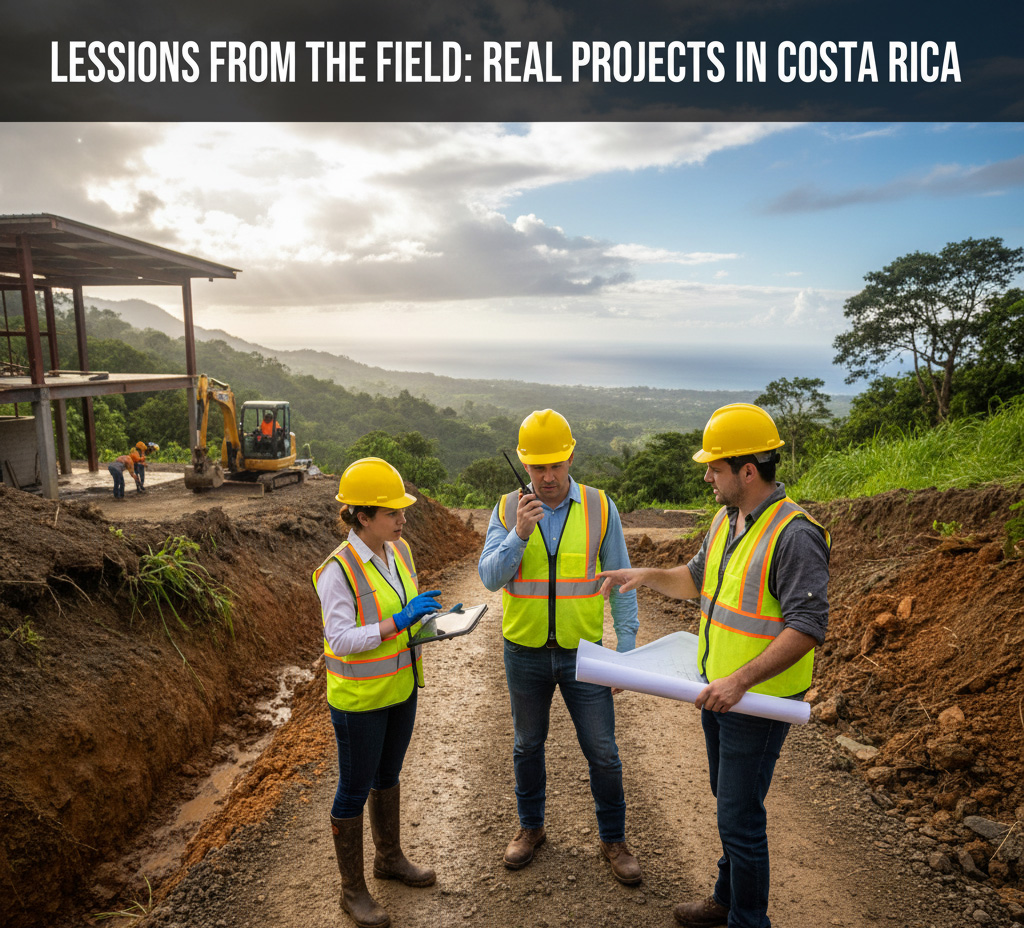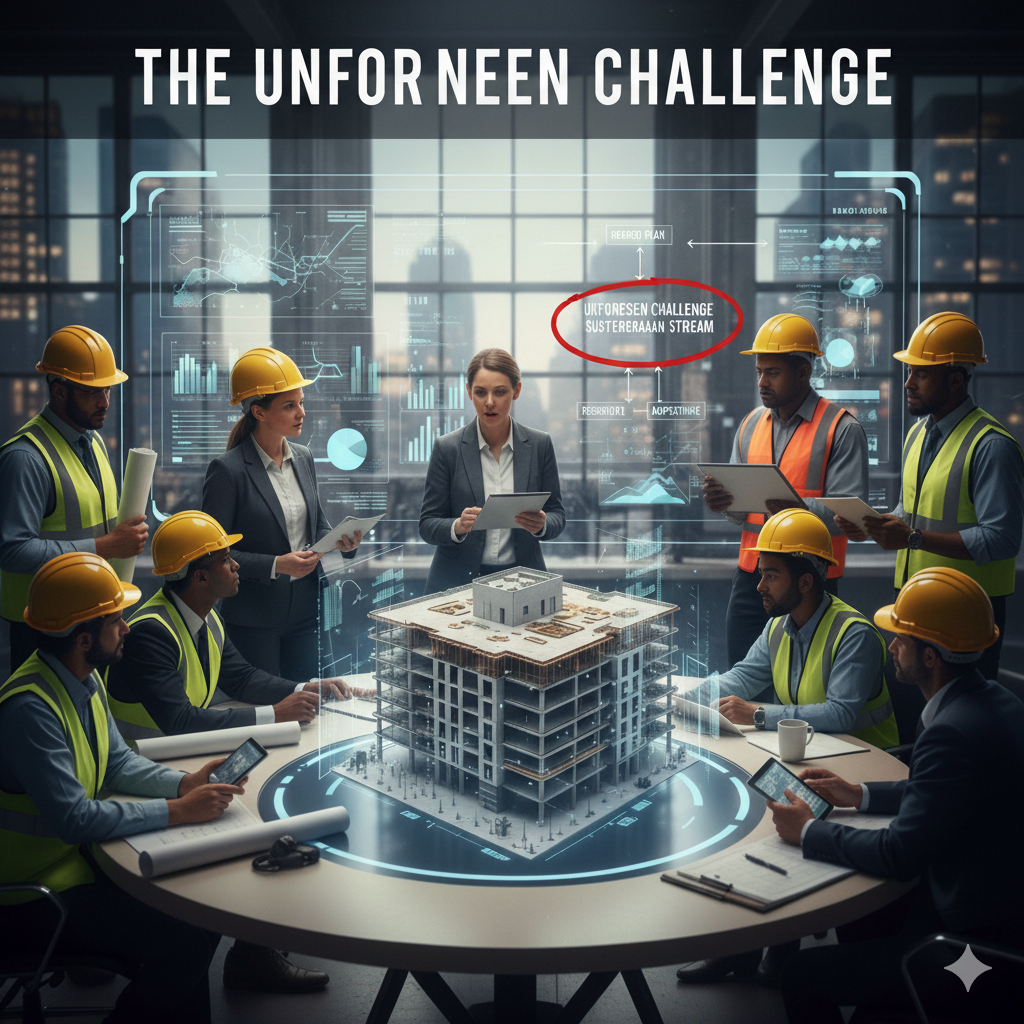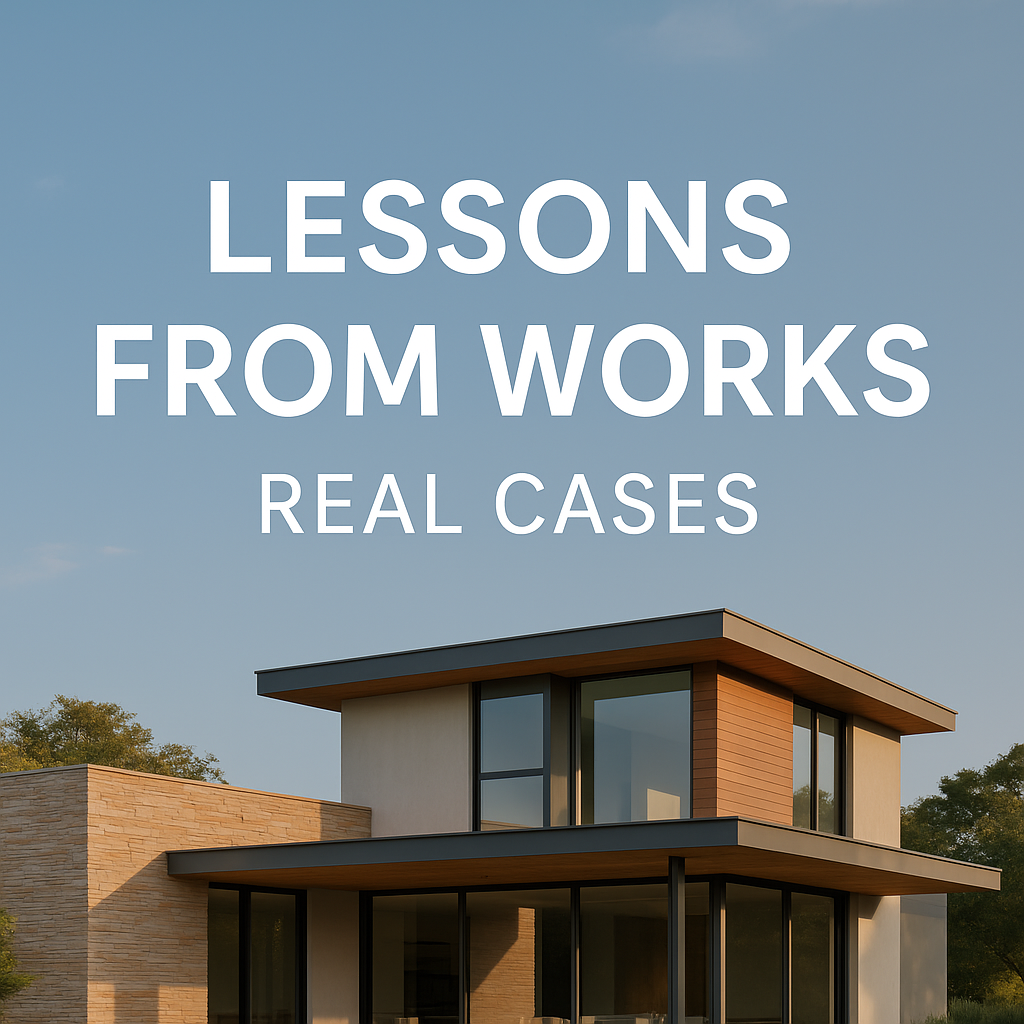Lessons from the Field: Real-World Project Insights in Costa Rica

At A&A Building Co., we believe that every completed project is a valuable teacher. In the unique and often challenging landscape of Costa Rican construction, our experiences on the ground—from the bustling urban centers to remote coastal developments—have provided us with invaluable lessons from real projects. These aren’t just anecdotes; they are crucial insights that refine our processes, enhance our problem-solving, and ultimately ensure greater success for future endeavors. The Dynamic Nature of Construction in Costa Rica Costa Rica’s «Pura Vida» charm extends to its construction environment, which, while beautiful, is also dynamic. Navigating diverse topographies, strict environmental regulations, and specific logistical challenges requires continuous learning. Here are some key takeaways we’ve gathered from our projects: Environmental Compliance is Paramount: From working with SETENA (the National Environmental Technical Secretariat) to protecting local biodiversity, early and thorough environmental assessment is non-negotiable. We’ve learned that proactive engagement and detailed planning for ecological impact not only ensure compliance but also foster better community relations and long-term project sustainability. Logistics Require Precision: Transporting heavy machinery and materials across mountainous terrains or to remote beach towns demands meticulous planning. We’ve refined our logistics strategies to account for road conditions, seasonal weather impacts, and customs processes, understanding that a single delay can have a ripple effect on the entire project timeline. Local Expertise is Invaluable: Collaborating closely with local municipalities, suppliers, and skilled labor is fundamental. Our projects have reinforced the importance of building strong relationships, understanding local practices, and integrating community input to ensure smooth operations and project acceptance. Adaptability to Weather is Key: Costa Rica’s distinct dry and rainy seasons significantly influence construction schedules. We’ve learned to build in greater flexibility for weather-related delays and to optimize work during favorable conditions, particularly for concrete pours and excavation work. Budgeting for the Unexpected: While thorough planning is essential, our experience shows that having a contingency for unforeseen site conditions, material cost fluctuations, or regulatory changes is vital. Real-world projects often present unique challenges that require agile financial management. Turning Challenges into Strengths Every obstacle we’ve encountered on a Costa Rican project site has become an opportunity to strengthen our approach. For instance, a challenging excavation on a steep slope taught us new techniques for erosion control and site stabilization. A project requiring specialized imported materials pushed us to develop more robust international procurement strategies. These «lessons from the field» aren’t just internal knowledge; they are the bedrock of our commitment to excellence. They allow us to approach new projects with a deeper understanding, more refined strategies, and a proven ability to deliver high-quality results, regardless of the complexities that arise.
The Unforeseen Challenge: A Project Manager’s Tale of Adaptation

In the dynamic world of construction, every project is a story waiting to unfold. While blueprints and meticulously planned schedules provide a roadmap, real-life scenarios often introduce unforeseen challenges that test a project manager’s mettle. Today, I want to share a particular case from A&A Building Co.’s history that perfectly illustrates the importance of adaptability and quick thinking. Our team was deep into the construction of a state-of-the-art office complex in a bustling urban area. The foundation was laid, the steel skeleton was rising, and we were on track, perhaps even a little ahead of schedule. Then, a local geological survey, prompted by a new neighboring development, revealed an unexpected anomaly beneath our site: a previously uncharted subterranean stream that, while small, could compromise the long-term stability of a specific section of the building if not addressed. The news hit us like a ton of bricks. We had conducted thorough initial surveys, but this particular feature had eluded detection. The initial reaction was a mix of frustration and concern. How would this impact our timeline? What about the budget? More importantly, how would we ensure the structural integrity of the building? Our first step was to immediately halt work on the affected section. This was a difficult decision, as it meant a temporary standstill and the potential for significant delays. However, safety and quality are paramount at A&A Building Co., and cutting corners was simply not an option. Next, we assembled a multidisciplinary task force. This included our internal engineering team, external geological experts, structural engineers, and even legal counsel to navigate potential implications. The collaborative effort was intense. We spent days poring over new data, conducting additional probes, and brainstorming solutions. Several options were on the table, each with its own set of pros and cons. Diverting the stream, reinforcing the foundation with specialized piling, or even slightly redesigning the affected portion of the building. Through rigorous analysis and open discussion, we decided on a combination of solutions: a reinforced, waterproof containment system for the stream combined with micro-piling for enhanced foundational support in that specific area. This approach provided the necessary stability without requiring a complete overhaul of the existing design. The implementation phase was another challenge. It required sourcing specialized materials quickly, retraining a portion of the crew on new techniques, and integrating these unexpected tasks into an already tight schedule. Our project managers worked tirelessly, re-sequencing tasks, adjusting resource allocation, and maintaining constant communication with all stakeholders, including the client. Looking back, this project stands out not because of the initial setback, but because of how our team responded. It was a testament to: The project was ultimately completed successfully, on time, and within the revised budget. The office complex stands today, a testament to resilience and the unwavering commitment to quality. This experience reinforced a crucial lesson: in construction, anticipating the unforeseen is impossible, but building a team that can effectively adapt to it is the true mark of a successful project.
Lessons from the Field: Overcoming Logistical Challenges in a High-Rise Urban Construction Project

Introduction Every construction project presents its own set of challenges—but some projects offer especially valuable lessons that shape how we work in the future. In this edition of “Lessons from Works – Real Cases,” we explore a recent high-rise project managed by A&A Building Co. in a densely populated downtown area. Tight site access, local regulations, traffic coordination, and stakeholder demands made this one of the most complex jobs we’ve tackled. Here’s how we turned these challenges into a successful, on-time, and on-budget delivery—plus what we learned for future builds. Project Overview 1. Challenge: Limited Site Access in a Dense Urban Zone Problem:The construction site was located on a narrow street with only one access point and limited room for staging materials or equipment. Solution:We implemented a Just-In-Time (JIT) delivery system, scheduled material drop-offs during off-peak hours, and coordinated with city officials and nearby businesses to minimize disruption. A digital logistics platform helped ensure precise timing and delivery tracking. Lesson Learned:Advance coordination with municipal authorities and surrounding businesses is just as critical as structural planning. Time invested in early-stage logistics pays off during execution. 2. Challenge: Coordinating Multiple Stakeholders Problem:The project involved public utilities, private investors, building owners, and local residents, all with different expectations and timelines. Solution:We held bi-weekly stakeholder meetings, shared real-time dashboards via a shared project portal, and maintained a dedicated community liaison to manage expectations. Lesson Learned:Transparent communication reduces friction and builds long-term trust. Invest in technology that keeps all stakeholders aligned. 3. Challenge: Noise and Traffic Management Problem:Strict city ordinances limited construction hours and imposed noise-level thresholds and traffic restrictions. Solution:We used low-noise machinery, scheduled high-impact work early in the day, and implemented a traffic management plan with approved detours and signage. We also installed real-time sound sensors for compliance monitoring. Lesson Learned:Compliance is not just about avoiding fines—it’s about maintaining good relationships with the community and minimizing project delays. 4. Challenge: Unforeseen Underground Conditions Problem:Excavation uncovered outdated utility lines not shown in official maps. Solution:Thanks to ground-penetrating radar (GPR) used during preconstruction, we were able to react quickly. We worked with utility providers to reroute lines and rephase parts of the foundation work without halting the entire job. Lesson Learned:Invest in advanced site investigation tools. Even small upfront costs can prevent major delays and redesigns. Results Key Takeaways Conclusion This project proved that even the most logistically challenging jobs can be completed smoothly with proper planning, stakeholder alignment, and strategic use of technology. At A&A Building Co., we believe that every build makes us better. That’s why we share our lessons—to help clients, teams, and partners work smarter and build stronger.
Lessons from Works: Real Cases

Real experience that shapes architectural design in Costa Rica In the world of architecture, theory is just the starting point. True mastery is proven on-site, where challenges are real and decisions carry lasting impact. At AA Building Co., we believe every project is an opportunity to learn, evolve, and redefine what it means to build with purpose. This article shares some of the most valuable lessons we’ve learned from real-life construction projects in Costa Rica, from high-end coastal residences to sustainable commercial buildings in the Central Valley. These experiences not only enrich our portfolio, but reinforce our commitment to responsible, functional, and meaningful architecture. 1. Adapting to the environment is essential Costa Rica’s geographic and climatic diversity presents unique design challenges. One of our most important takeaways is learning how to adapt architectural design to the natural environment. In coastal regions like Guanacaste and the Pacific, we’ve implemented passive ventilation, solar control strategies, and local materials—not just for energy efficiency, but to create harmony with the surrounding landscape. Lesson learned: Integrating the natural environment isn’t optional—it’s a technical and ethical responsibility. 2. User-centered design creates long-term value In numerous residential projects, we’ve found that actively listening to end users transforms the functionality of a space. It’s not just about aesthetics; it’s about designing homes and commercial areas that align with the routines, needs, and aspirations of the people who live and work in them. Lesson learned: Good design is measured by the quality of life it provides in the long run. 3. Sustainability is not a trend—it’s the standard From rainwater harvesting systems to low-impact materials, each of our projects is an opportunity to embrace sustainable design principles. In recent builds, we’ve incorporated green roofs, solar panels, and certified timber as part of an integrated approach. Lesson learned: Building with tomorrow in mind is not only possible—it’s essential. 4. Early planning saves time and money Thanks to our fully integrated architecture, engineering, and construction model, we’ve learned that early coordination among disciplines prevents costly errors. Tools like BIM modeling and integrated scheduling have helped us deliver projects on time and with the highest standards of quality. Lesson learned: Early collaboration between specialists leads to better resource use and better outcomes. 5. Trust is the foundation of every successful project In our experience, the most successful projects are those where open communication exists between client, architect, and contractor. Building relationships based on trust has allowed us to overcome unforeseen obstacles and deliver outstanding results. Lesson learned: Architecture is as much about human connection as it is about technical execution. Final thoughts Every construction site teaches us something. At AA Building Co., each project in Costa Rica strengthens our commitment to thoughtful, efficient architecture tailored to local realities. This hands-on, human-focused approach is what enables us to deliver unique solutions with local character and global vision. Looking to develop a project in Costa Rica? Explore our portfolio and get in touch to start building a story that leaves a lasting mark. architecture in Costa Rica, sustainable design, architectural case studies, real-world architecture, tropical architecture, construction lessons, residential architecture Costa Rica, architectural firm Costa Rica, AA Building Co.